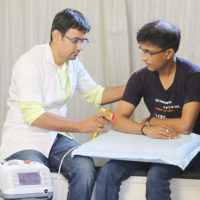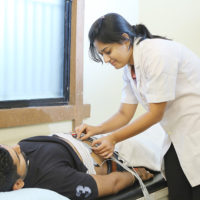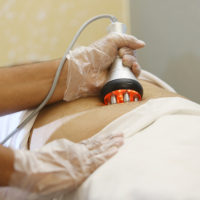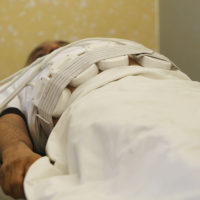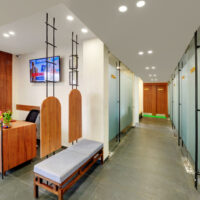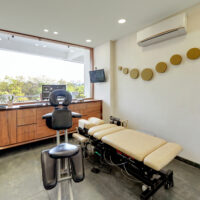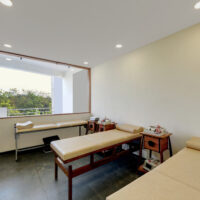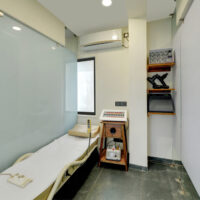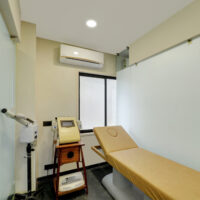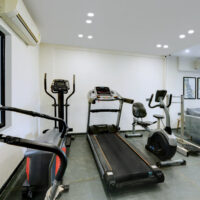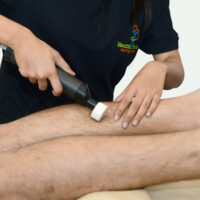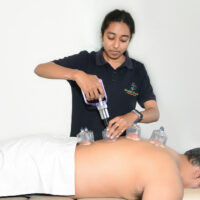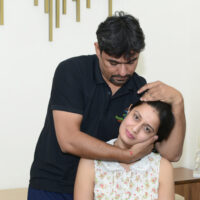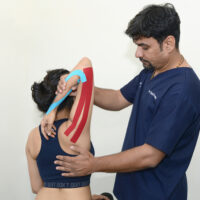Knee pain is a common condition that can affect people of all ages. It can be caused by a variety of factors, including injuries, overuse, medical conditions, and age-related wear and tear. The pain can range from mild discomfort to severe and debilitating.
Knee Pain
An ACL injury is an injury to the anterior cruciate ligament (ACL), which is one of the four main ligaments in the knee. The ACL connects the thighbone (femur) to the shinbone (tibia) and helps to stabilize the knee joint.
ACL injuries are most commonly caused by sudden stops or changes in direction while running or jumping, or by direct impact to the knee. Athletes and football players are more prone to ACL injuries.
Symptoms of an ACL injury may include a “popping” sensation in the knee, pain, swelling, and difficulty walking or bearing weight on the affected leg. The knee may also feel unstable or give way during walking
- Focus on strengthening the muscles around the knee, including the quadriceps, hamstrings, and glutes. Strong muscles help stabilize the knee joint and reduce stress on the ACL. Incorporate exercises like squats, lunges, step-ups, and leg presses into your fitness routine.
- Balance and proprioception training, Enhancing proprioception helps maintain proper alignment and control during dynamic movements.
- Plyometric exercises into your training regimen to improve power, agility, and landing mechanics. Exercises like box jumps, lateral jumps, and bounding can enhance muscle coordination and control during high-impact activities.
- Learn and practice proper techniques for landing, pivoting, cutting, and decelerating
- Always start your workouts or sports activities with a proper warm-up routine. This should include dynamic stretches, light jogging, and movements that mimic the activity you’ll be performing. Cooling down with static stretches and light exercises after the activity helps to gradually lower your heart rate and relax your muscles.
- When participating in high-risk sports or activities, consider using protective gear such as knee braces or knee pads
- Avoid excessive fatigue.
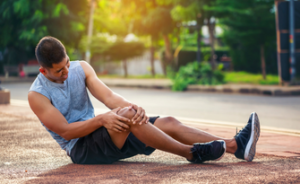
Patellar Tendinitis
Patellar tendinitis, also known as jumper’s knee, is a condition that occurs when the patellar tendon, which connects the kneecap (patella) to the shinbone (tibia), becomes inflamed or irritated. This condition is most commonly seen in athletes who participate in sports that involve jumping or repetitive movements such as basketball, volleyball, or running
The most common symptoms of patellar tendinitis include pain and tenderness in the knee, especially just below the kneecap. The pain may be worse with activity or after prolonged sitting, and may also be present at night. Over time, the pain may become chronic and more severe.
- Avoid sudden increases in training intensity or duration, especially if you’re not accustomed to high-impact activities. Gradually progress your training to allow your body to adapt and avoid excessive stress on the patellar tendon.
- Always warm up before engaging in physical activities. Incorporate dynamic stretches and light exercises that target the lower body.
- Focus on strengthening the muscles around the knee, particularly the quadriceps and hip muscles, Include exercises like squats, lunges, leg presses, and hip abductor and adductor exercises in your workout routine.
- Consider incorporating eccentric exercises specifically targeting the patellar tendon, such as decline squats, eccentric squats, and eccentric leg presses. Consult a healthcare professional or a qualified trainer for proper guidance.
- Pay attention to maintaining good knee alignment and avoiding excessive stress on the patellar tendon during activities.
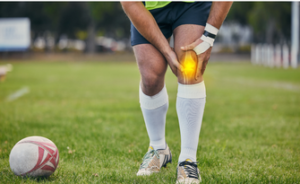
IT band Syndrome
IT band syndrome is a common overuse injury that affects the iliotibial band, a thick band of tissue that runs from the hip to the outside of the knee. This condition is often seen in runners and other athletes who participate in activities that involve repetitive bending and straightening of the knee.
The most common symptom of IT band friction syndrome is pain on the outside of the knee that worsens with activity. The pain may also be accompanied by a snapping or popping sensation, and may be more pronounced when going downhill or walking down stairs. Over time, the pain may become chronic and more severe.
- Avoid sudden increases in training volume or intensity, especially if you’re not accustomed to high-impact activities.
- Always warm up before engaging in physical activities. Incorporate dynamic stretches and exercises that target the lower body, including the IT band.
- Focus on strengthening the muscles around the hips, thighs, and core. Strong muscles help provide stability and support to the IT band. Include exercises like hip abductor and adductor exercises, squats, lunges, and core strengthening exercises in your routine.
- Foam rolling and self-myofascial release to release tension in the IT band and surrounding muscles
- Incorporate cross-training activities into your routine to vary the stress on your joints and tendons. This can help reduce the risk of overuse injuries, including patellar tendinitis.
- Avoid excessive downhill running or jumping.

Meniscus Injury
A meniscus injury is a common knee injury that occurs when there is damage to one or both of the C-shaped pieces of cartilage in the knee joint, known as the menisci. The menisci act as shock absorbers between the thighbone (femur) and shinbone (tibia) and help to distribute weight and reduce stress on the knee joint.
Meniscus injuries can be caused by a sudden twisting or rotating movement of the knee, or by wear and tear over time.
Symptoms may include pain, swelling, stiffness, and difficulty straightening the knee. In some cases, a piece of torn meniscus may become lodged in the joint, causing the knee to “lock up” or feel unstable.
- Strengthen the muscles around the knee with exercises like squats, lunges, leg presses, and hamstring curls in your workout routine.
- Maintain a healthy weight through a balanced diet and regular exercise to reduce the load on your knees.
- Prior to any physical activity or exercise, perform a thorough warm-up routine to prepare your muscles and joints for the demands of the activity, Cooling down afterward with static stretches and gentle movements helps to gradually lower your heart rate and relax your muscles.
- Avoid sudden and excessive twisting motions because meniscal injuries often occur due to sudden and excessive twisting or pivoting of the knee joint.
- High-impact activities on hard surfaces, such as running on concrete, can increase the risk of meniscal injuries.
- Flexibility in the muscles surrounding the knee, such as the quadriceps, hamstrings, and calf muscles, can help improve joint range of motion and reduce stress on the meniscus.

Knee Bursitis
Knee bursitis is a condition that occurs when the bursae, small fluid-filled sacs that act as cushions between bones, tendons, and muscles in the knee joint, become inflamed. This can be caused by overuse, repetitive motions, or direct trauma to the knee.
The most common symptom of knee bursitis is pain and swelling in the affected area, which may make it difficult to bend or move the knee. In some cases, the bursa may become infected, leading to additional symptoms such as fever, redness, and warmth around the knee.
- Avoid sudden increases in training intensity or duration, especially if you’re not accustomed to high-impact activities. Gradually progress your training to allow your body to adapt and avoid excessive stress on the patellar tendon.
- Always warm up before engaging in physical activities. Incorporate dynamic stretches and light exercises that target the lower body.
- Focus on strengthening the muscles around the knee, particularly the quadriceps and hip muscles, Include exercises like squats, lunges, leg presses, and hip abductor and adductor exercises in your workout routine.
- Consider incorporating eccentric exercises specifically targeting the patellar tendon, such as decline squats, eccentric squats, and eccentric leg presses. Consult a healthcare professional or a qualified trainer for proper guidance.
- Pay attention to maintaining good knee alignment and avoiding excessive stress on the patellar tendon during activities.

Fractures
Knee fractures can be caused by a variety of factors, including traumatic injuries such as falls, car accidents, or sports injuries, as well as underlying medical conditions that weaken the bones, such as osteoporosis.
Symptoms of a knee fracture may include severe pain, swelling, bruising, difficulty bearing weight on the affected leg, and an obvious deformity or misalignment of the knee joint. In some cases, there may be a popping or cracking sound at the time of the injury.
- Proper Warm-up and cool-down before workout
- Practice proper footwear selection Avoid high heels and shoes with inadequate arch support.
- Use Knee braces or supports
- Strengthening the muscles around the ankle joint can provide better support and stability
- Improve balance and proprioception by including exercises that challenge your balance and proprioception. Balance boards, stability exercises, and single-leg exercises can help improve your body’s ability to maintain stability and prevent ankle sprains.
- Be mindful when walking or running on uneven surfaces, such as gravel, grass, or stairs
- Avoid overexertion and fatigue during workout
- Modify high-risk activities
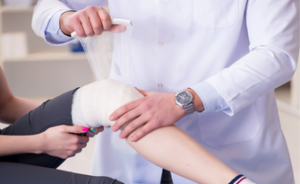
Patella-Femoral Pain Syndrome (PFPS)
Patellofemoral pain syndrome (PFPS), also known as runner’s knee, is a common condition that causes pain in the front of the knee, around or behind the patella (kneecap). It is typically caused by overuse or repetitive stress on the knee joint, such as running, jumping, or squatting, and is common in athletes and active individuals.
Symptoms of PFPS may include a dull ache or sharp pain in the front of the knee, especially during activities that involve bending the knee or putting weight on it, such as climbing stairs or kneeling. Swelling, popping or grinding sensations in the knee may also occur.
- Avoid sudden increases in training volume or intensity, especially if you’re not accustomed to high-impact activities.
- Always warm up before engaging in physical activities. Incorporate dynamic stretches and exercises that target the lower body, including the IT band.
- Focus on strengthening the muscles around the hips, thighs, and core. Strong muscles help provide stability and support to the IT band. Include exercises like hip abductor and adductor exercises, squats, lunges, and core strengthening exercises in your routine.
- Foam rolling and self-myofascial release to release tension in the IT band and surrounding muscles
- Incorporate cross-training activities into your routine to vary the stress on your joints and tendons. This can help reduce the risk of overuse injuries, including patellar tendinitis.
- Avoid excessive downhill running or jumping.

Knee Arthritis
Knee arthritis is a condition characterized by inflammation and degeneration of the knee joint. It is a common form of arthritis that typically affects older individuals, although it can occur at any age.
Osteoarthritis is the most prevalent form of knee arthritis. It occurs when the protective cartilage that cushions the ends of the bones in the knee joint gradually wears away, resulting in bone-on-bone contact. Osteoarthritis is typically age-related and can be caused by factors such as repetitive stress on the knee joint, previous injuries, obesity, and genetics.
Symptoms of knee arthritis may include:
- Knee pain that worsens with activity and improves with rest.
- Stiffness and limited range of motion in the knee joint.
- Swelling and tenderness around the knee.
- A grating or grinding sensation during knee movement.
- Weakness or instability in the knee.
- Maintain a healthy weight because Excess body weight puts additional stress on your knee joints. Maintaining a healthy weight or losing weight if necessary can help reduce the risk of developing knee osteoarthritis or slow its progression if you already have it.
- Regular physical activity helps keep your joints strong and flexible. Low-impact exercises such as walking, swimming, cycling, and gentle strength training can help strengthen the muscles around the knee, support joint stability, and reduce the risk of osteoarthritis.
- Avoid repetitive stress on the knees.
- Use proper joint protection techniques when engaging in activities that involve kneeling or squatting.
- Maintaining good posture and using proper body mechanics can help reduce unnecessary strain on your knee joints.
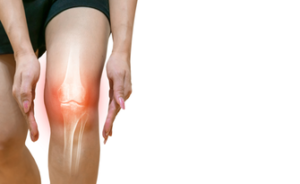
YOUR NEXT STEPS!
-
Request An Appointment
-
Find the Root Cause and Receive A Custom Treatment Plan
-
Monitor Progress
-
Recover & Get Back to Life!
